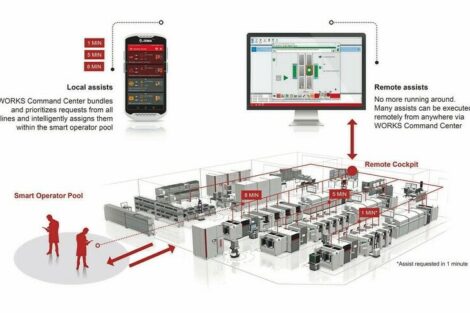In the U.S., the Environmental Protection Agency (EPA) has recently signed a final rule on Metal Products and Machinery (MP&M) effluent limit guidelines which is substantially different from the regulations discussed before. The former policy would have made wastewater discharge limits 95% more stringent for PCB manufacturers, and introduced national discharge limits for electronics manufacturing services (EMS) facilities for the first time. The final rule doesn’t contain any new regulations for the PCB or EMS industries.
„We are very delighted with the decision by EPA. PCB manufacturers already meet very stringent environmental regulations, and the proposed rules did not provide any substantial environmental benefits,“ said John Sharp, IPC environmental, health and safety committee chair and Teradyne Connection Systems environmental and safety manager. „This recent signing now results in tremendous cost savings at a very critical time for our industry. The expense would have been a tremendous burden at any time, but it would have been devastating in today’s economic environment.“
EPA first proposed the MP&M effluent limitation guidelines and included a total annualized cost estimate of $147m for the U.S. PCB industry, or slightly over $250,000 per facility. EPA also calculated that seven PCB facilities would be forced to close due to the costs of complying with the proposed guidelines, while an additional 301 facilities would have difficulty financing compliance or ongoing investments. Following a public testimony at EPA hearings, IPC filed over 300 pages of comments that firmly detailed EPA’s apparent failure to properly evaluate its proposed rule impact, and revealed the agency’s overestimations of environmental benefits and underestimations of the costs. The comments also requested that EPA assess realistic wastewater treatment capabilities, obtain a true estimate of the pollution expected to be removed, obtain a realistic estimate of the cost and correct the economic impact analysis. In addition, Fern Abrams, IPC’s director of environmental policy, testified before a House of Representatives committee, regarding EPA’s apparent failure to conduct adequate regulatory analysis.
EPA then issued a revised proposal which showed that the economic impact and cost effectiveness of the treatment options were actually much higher than originally projected. EPA predicted now that between 28 and 55 facilities would be put out of business, a significant increase over the estimate of seven companies before. It also drastically revised its estimate of the pollution removals from 1.1m to only 165,662 pound equivalents. IPC then responded with comments that both praised EPA for correction and called for a modification of the so-called inflated environmental benefits. „IPC’s leadership on this issue, combined with the participation of our members, forced EPA to react to industry’s concerns,“ said IPC’s Abrams. EPA then eventually revised their models. (gbw)
Share:









